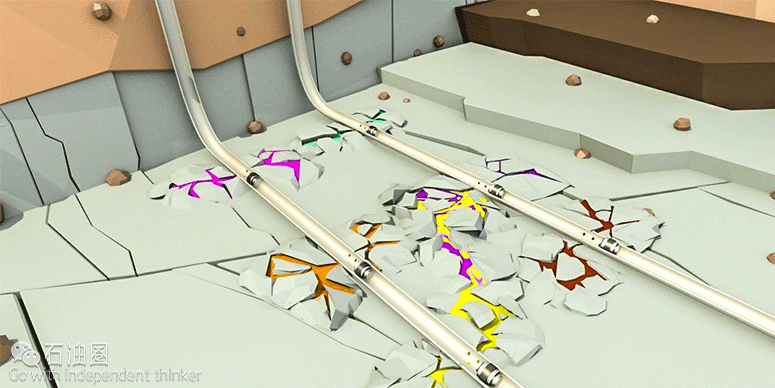Over several projects in the last few years Tracerco has demonstrated the value of using smart tracers to measure stimulation effectiveness in unconventional oil and gas reservoirs. In the challenging market conditions that the industry faces today, reducing lift costs is paramount. Stimulation optimisation is a key area to reduce spend on stimulation activities, and yield maximum production.
Unique tracers are used to tag the native oil, gas and frac water in each of the stages in unconventional wells. The analysis allows accurate stage flow data comparison to be made and determine the most effective stimulation conditions. This can identify where stimulation is not effective and therefore in future wells with similar geophysical expectations, stimulation can be deleted in those stages, ensuring resources are optimised.
In addition, tracers can be used to compare stimulation technologies in order to identify the most effective overall.
Five steps to cutting reservoir stimulation costs by 20%
Step 1: Choose candidate wells to run competing stimulation strategies
Once you know which stimulation strategies you want to compare, you need to find two candidate wells with similar geophysical properties to run the strategies in. This will allow you to have as close to a like for like comparison as is achievable.
The challenge faced by many operators is understanding which stages of a well have been successfully stimulated. Factors that affect stimulation include the geology so it is imperative that these are similar within each candidate well.
Step 2: Choose stages to be measured and tag with tracer
One way to accurately pinpoint which stages have successfully been stimulated is to use smart tracers to tag various stages within a well. Tagging the stages with unique tracers in both candidate wells ensures that comparisons can be drawn on the stimulation effectiveness within each well and on a stage by stage basis.
Tracers are very accurate – the oil and gas tracer partitioning coefficient, for example, are 100,000 times more favourable to oil or gas than water and they are unaffected by pumping systems.
Smart tracer is extremely easy to apply, being injected into the main flow of frac fluid at each stage. Tracer technology is well established and our customers have been using it for over 30 years in their conventional fields to measure fluid flow. We have a large number of unique tracers meaning many stages can be measured in one frac completion.
Step 3: Sampling and analysis
Samples must be collected from both wells at the same time intervals. Typically it is expected to collect samples twice a day for the first ten days, then once a day for the remainder of the first month, then weekly. The tracing process can last anywhere from a month to beyond a year depending on the flow of the wel.
In terms of gathering samples they can be collected by the operators with specialist kits that TRACERCO provide, analysis at labs .
Step 4: Data results
A recent example from the Eagle Ford Shale showed some interesting results that demonstrated how effective tracers were in optimising field development plans and saving on stimulation budgets.Stimulation strategy effectiveness data showing stages that are low producing
Tracer response from the samples showed that , one stimulation strategy yielded 18,000 barrels per month whilst the second stimulation strategy yielded 30% more product at 26,000 barrels per month with no anomaly showing majority flow from one stage due to unforeseen geological properties.
Furthermore, when the data was analyzed in greater detail it showed that in both strategies the stimulation was ineffective in stages eight and nine of each well (see graph). Reducing the stimulation of these two stages in either strategy would yield a 20% reduction in stimulation costs with only a 4% reduction in oil production, which is effectively offset by the saving.
Ultimately you can confidently optimise development plans through the additional data gained from a smart tracer project.

 石油圈
石油圈
